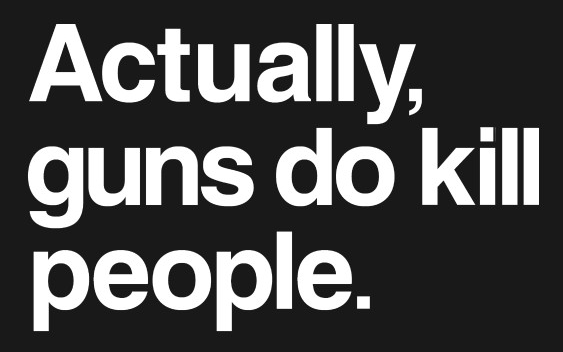Slack
I can vaguely remember life before Slack. It seems to be a very long time ago. Almost a bit unreal. How did we collaborate back then? I have some recollection of using jabber. Or was that the protocol? Was it named spark? Ignite? It was open source at least and had IM capabilities. But did it have channels? At least the developers used it. I think. I know some used MS messenger and pidgin. Or was in penguin? But did it have channels? I can’t seem to recall, it was all too long ago. And IRC! Now I remember! We set up an IRC server OnPrem! Wherever did that go? Was it used? Was it archived? I can’t remember. It was eons ago. Copious amount of time. We’ve been using Slack forever. Hey, wait a minute… It’s only been less than 5 years since the company set up slack! What the hell! OMG! What did we do before Slack!? How were we able to get anything done? And more importantly, how the hell did we circulate funny stuff before Slack!?
Yes, it was email. We had the “Random” distribution group, where people could send their funny stuff. Everyone was added to that group (because some were really pissed to have missed all the funny emails), but then we had some coworkers complaining loudly that they were disrupted in their work by the funnies, so we had to instruct them on how to make an inbox rule to move mails sent to that group into junk. Some refused (were unable to follow simple instructions), and we had to remove them from the “Random” group because of their whining. Then some of the more PR minded people realized “Random” was a great way to reach most of the employees quickly, so all of a sudden, important information started to be mailed there as well, besides the nonsense. And the people who had asked to be removed from the “Random” group howled like banshees, having missed out on important information… We had a lose-lose situation on our hands.

Of course, we also had the “all employees” and “insights and trends” and “department 1,2,3,999” and “what not” distribution groups. And no one ever seemed happy with the groups they were in at the moment. There was always someone left out of the loop, or someone receiving mail they should not get. And all new employees started from scratch, having no history in their inboxes, basically left in the dark about even the most recent history of the company and its projects.
Slack
Five years ago, I found myself in a meeting with the CFO and a Senior SA. The SA pitched a new messaging system called Slack. “Silly fucking name”, I remember thinking. “And expensive as shit.” “This system is great! You can have channels! You can have emojis! The developers love it!” “Fucking emojis, what are you 10?” I remember asking. “But you don’t understand! This is the future! We can finally kill email!” “But this is just fucking IRC! Why the hell should we pay top dollars for that? I’ll just setup Microsoft chat or something, I think we have it included in our Enterprise license bundle, let me check…” “But Slack has an app for the iPhone! And the young developers love it! And it has emojis!” “No fucking way. I say no to this shit! Fuck emojis, we are a business not a fucking kindergarten! Slack is not an enterprise solution! It’s unsecure! There’s no AD-integration! This is just a hobby project! I say NO!”
![]()
Luckily, the CFO overruled my naysaying. I pouted and refused to take any part in the implementation and maintenance. “This is a developer tool, let them manage it and I’ll just sit over here and watch it crash and burn.” Then I went on paternity leave for 9 months.
Fresh start
When I got back from my parental leave, I was shocked to see Slack was being used by everyone! Every single employee was using it! The CEO, the project managers, the designers, the advertisers! Even my IT colleagues. “How could you betray me like this while I was unable to defend the fort?” I thought to myself. “Fucking traitors.” But, since I had been away for so long, I no longer held that burning hatred against Slack (I was too busy being a new baked parent to hold grudges), but instead decided to stop pouting for a while and check it out. So, I set up my account, installed the app, and started to poke around. I was amazed! It worked! Even the emojis made sense! Since all the developers where in there, and they refused to answer emails, the project managers had caved and started to use it. And since the PMs were there, they forced the designers and advertisers to use it. And since everyone else was there, management had joined as well. And finally, IT. The SA, who had introduced Slack, had taken charge of the system. He moderated channels. He onboarded newbies. He cared for the system in a very tender way! I suspect, he also put in the extra effort to make it a success, maybe to prove IT wrong…

What I witnessed was a text-book example of a successful implementation. And those are rarer than truffles. The SA wanted to do it by the book. This could just as well have been another Shadow IT implementation, but he wanted it to be for real. Because he knew it would work. I will never say no to something like this again, without hearing out the person asking properly. After a week or so, I accepted total defeat. I had been wrong. Slack was all the things our company had missed. We were finally able to be agile! We were finally able to reach everyone at the company quickly if not instantly! We had a collaboration platform that was self-maintained! People received the information they needed, since they could easily choose the channels they belonged to. It was beautiful!
Conclusion
Shortly after having embraced Slack, I started to look at the APIs. At first, I was skeptical. “This feels very amateurish. What the hell is json? Where is the SDK? Where’s the XML? Where’s the SOAP?” But after a little while I got it. It was like a lightning to my brain! It’s clean, it’s simple, it’s approachable! This was the future of APIs!

Now, after almost 5 years, even though we were off to a rough start, I still love Slack. It is just the standard for how to build software! Sure, there are drawbacks with Slack (and all other similar systems). For example, information of a more static nature is easily lost in the flow. No one ever checks pinned items, it’s just easier to @channel to disturb everyone with your little problem. And if you’re away for a week, it’s very difficult to find the important stuff among oceans of memes and drivel. The free and distributed nature of the system is a sure way to avoid any type of structure. And people creating closed channels, snatching names like events or designs for themselves and then quitting is a hassle. And since anyone can invite external people, and no one ever cleans out old members of a channel, InfoSec is kind of a nightmare. Some might argue that it’s not the system that creates chaos, it’s the people using it. Well, some also argue it’s not the guns that kill people…

Did Slack kill email? Yes, in a sense. We still maintain distribution groups for departments. But at least i have not seen an emailed meme in 5 years. The last couple of months i’ve seen a worrying trend though. New employees are sending out their presentation of themselves on email. Why? I guess they’re been instructed by HR. I need to go and have a talk with them…
Some structure and security concerns aside, I’m the first to admit that Slack is probably the single most important piece of software ever to have been introduced in the company! And name one system that’s flawless, I dare you!
The personal experiences, viewpoints and opinions expressed in this blog post are my own and in no way represent those of the company.
